Featured Image: Nic Alegre | Skier: Jake Hopfinger
You probably know his name. At a bare minimum, you’ve seen him in videos and photos over the last four seasons. His segments with Teton Gravity Research and Benshi Creative are outstanding, bringing together technicality and creativity in ways that are rarely matched in the wide world of skiing. While he’d never admit it, Jake Hopfinger is possibly one of the best freeskiers you’ll ever find. After exploding onto the scene in 2020 by becoming the first skier to land a double backflip into Corbet’s Couloir, he’s gone on to film with the best in the business, sign contracts with Rab and LINE Skis, tackle preposterous lines from Wyoming to Alaska, and a whole lot more.
But before any of that, he was just another guy who quit ski racing and moved to Montana. That humility, his belief that he is just another person out looking for joy in the mountains, is what makes Hopfinger stand out in the wide world of skiing. As we sat drinking a beer on the patio of Bozeman’s Bacchus Pub, basking in the afternoon sun and exchanging stories about deep days at Bridger Bowl, I got an insight into how this New York born skier, surfer, private trail-builder and shepherd’s pie enthusiast makes it all work. After only a few minutes, one thing became abundantly clear; he takes his skiing quite seriously without taking himself very seriously at all. It’s a rare quality in a world of self-promotion and egocentrism. By looking past his identity as a skier, he was able to push himself into new territory on and off the hill this winter.
His dedication towards long-form film projects, a value for human connections and a passion for exploration have all led Hopfinger to grow his role. Building off of the skills he’s acquired, he’s picking up new positions both behind the camera and away from the mountains. His story is layered with lessons applicable to anyone. From pulling together an AK mission at the last second to his detailed media philosophy, we left no stone unturned.
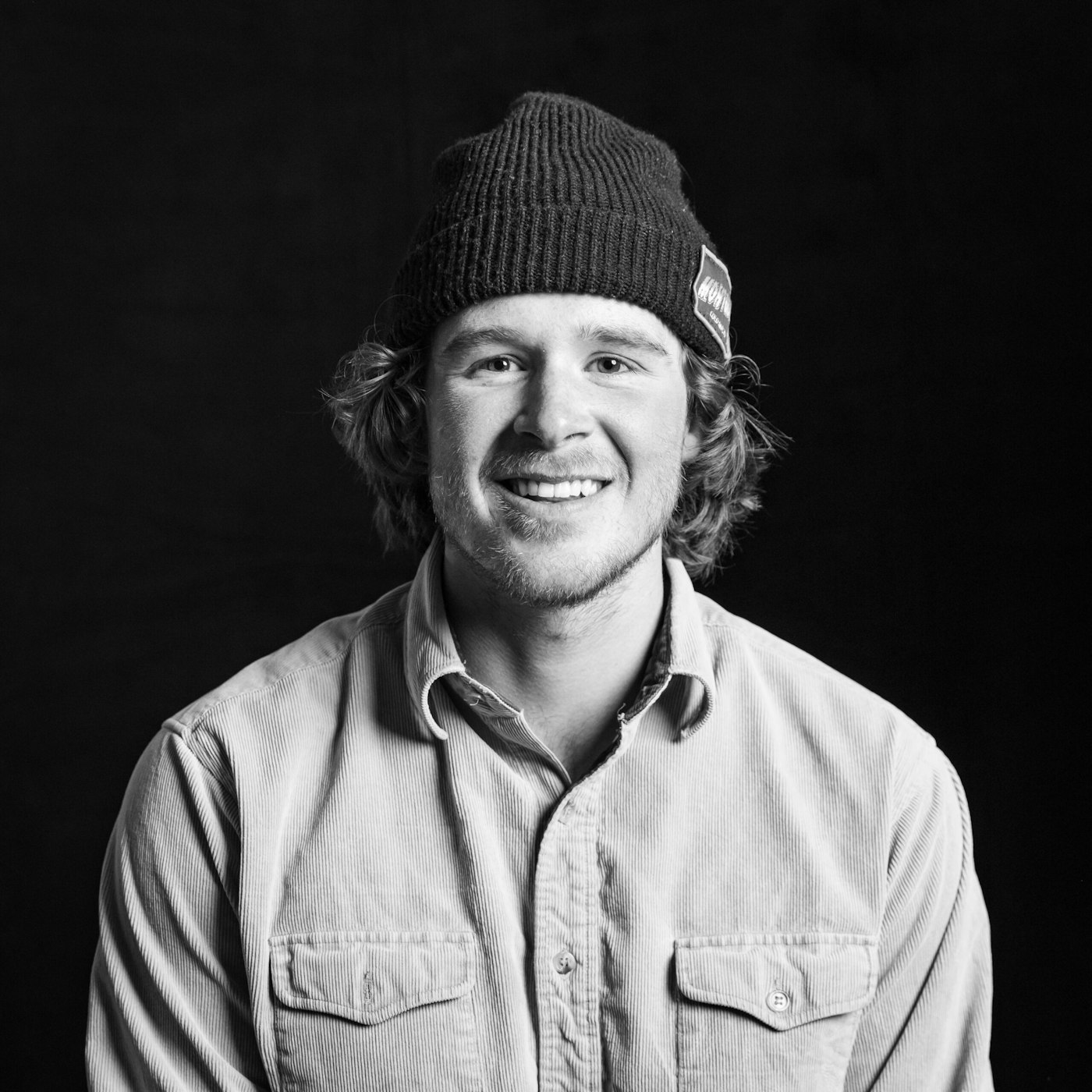
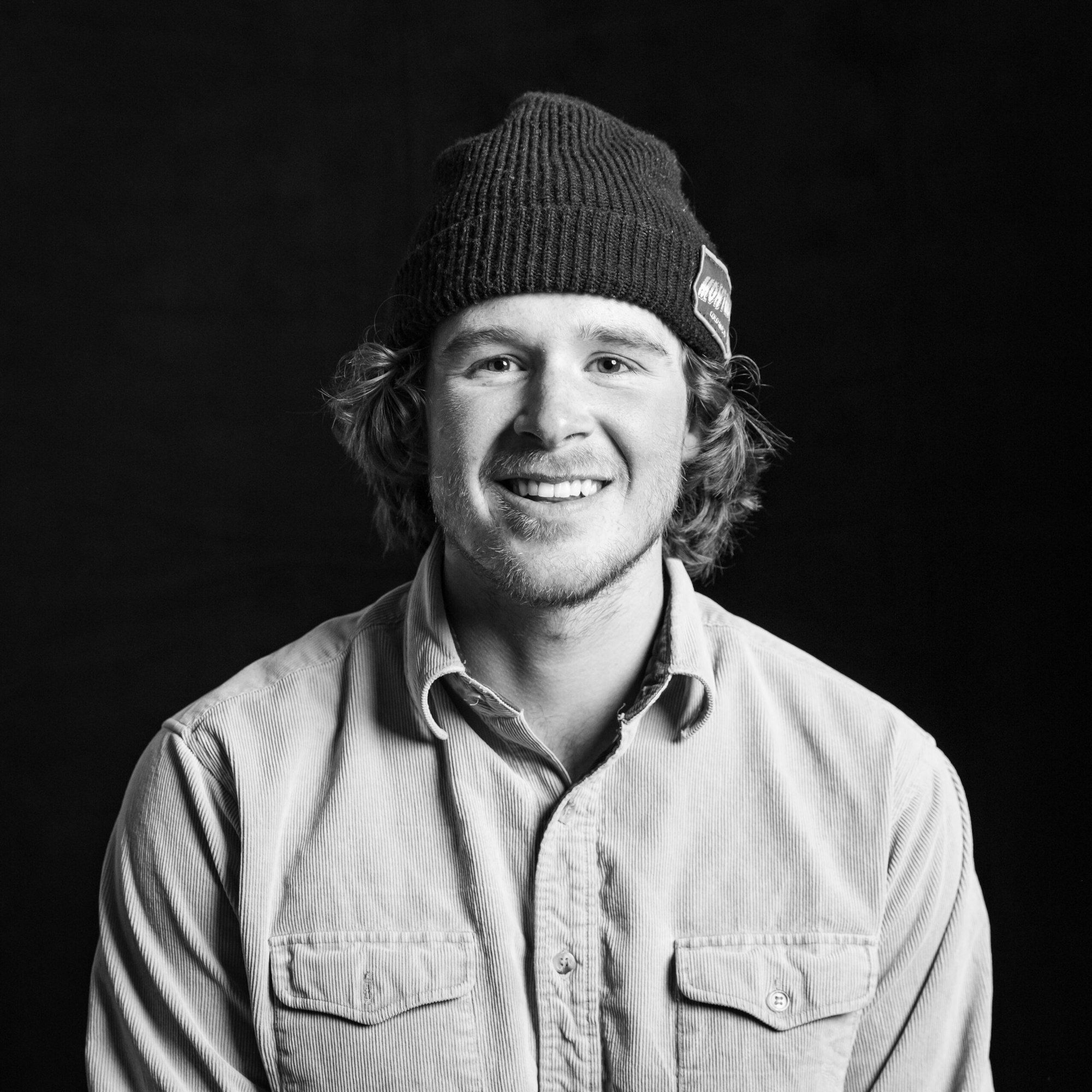
Jake Hopfinger | PHOTO: Courtesy of Red Bull
I haven’t done as many spring skiing missions as usual this year, but the mountains have held snow well up high here in Montana. I was recently skiing in Southern Colorado, however, filming for a TV Show called “Ultimate Mountain Athlete”. I can’t say too much about it, but it’ll be premiering soon and I’m excited for people to see it. The other competitors on the show are so talented. They kicked my ass. It was an awesome way to wind down such a busy winter.
You’ve lived in Montana for eight years now, correct?
Yeah, that’s right. I came out here to go to school at Montana State and have been in Bozeman since then.
What’s kept you here?
The skiing. The access and terrain available in a relatively close area are fantastic. There are so many backcountry zones to explore, and of course, Bridger Bowl [Ski Area] is a gem. I love the community that has grown here. But I won’t be in Bozeman forever. I just bought some land in the mountains around the Idaho – Wyoming border. I think eventually I’ll start moving my winter operations there. I’d love to be able to set up shop on the beach somewhere, too, but that’s a ways off.
Without giving away too much, what’s so special about Bridger Bowl?
It’s 15 minutes from my house, and it’s always fun, but truthfully Bridger is just its own deal. I’ve never skied another hill that’s set up like it. You can see everything from the parking lot, it’s all there, but it’s hard to figure out where and how to ski it. It’s demanding, complex, technical, and beyond rewarding. The people and place are unlike anything else in my biased opinion; just the best.
I’ve heard you’re a pretty dedicated surfer. How does surfing contrast to skiing in your view?
I’m certainly not the best surfer, but yeah, I really love it. I was raised in western New York and would spend time in the summers near Cape Cod, Massachusetts, so as a kid I was lucky enough to surf a lot. I fell away from it for a while because it’s hard to be a surfer in Montana [laughs]. But these last couple of years I’ve been finding my way back to it which has been amazing. I saved up for a while to go on a surf trip at the end of last winter. We went to Mexico, Indonesia, Nicaragua, and Portugal. It was incredible. Words just won’t do it justice.
With surfing, I love the change of pace, and the change of scenery. It’s such a different sport than skiing, at least for me. Skiing is very high-intensity and, because it’s my job, there is a lot of pressure to produce. With that pressure comes the desire to push yourself. Everyone wants to get better at what they’re doing, and at a certain point, pushing yourself means taking on more and more risk. When I’m surfing, I can progress and feel the satisfaction of learning without taking on so much danger. It’s fun to be a rookie! The older I get the more I appreciate that. But I still love pushing my skiing, don’t get me wrong.
Judging by your schedule this winter, I assume you had the chance to do just that?
Absolutely. This season was such a whirlwind of fun trips.
Where did you start off filming this year?
My first film trip of the winter was with Karl [Fostvedt]. Well, we were trying to film at least. The goal was to stack clips around Idaho, but the early season snowpack was pretty precarious out there. We were filming for “Brap Ski 4” and got some good clips, skied some pow. We wanted to be careful with the snow being consistently unstable, plus since it was warm down low we had to go high up into the mountains. It was a slow-moving process and consisted of skiing a lot of low-angle pow, but it was still a fun time.
What’s a day like filming with the legendary Crazy Karl?
Oh, it’s the best! Karl’s got the sickest place and great terrain right out his front door. We would wake up, drink probably four or five cups of coffee, fire up the sleds in the garage, and head out from there. He’s very pragmatic and has immense knowledge when it comes to snow safety, so I always feel comfortable with the guy when we’re in the backcountry. He knows how to have fun and keep spirits up even when the conditions aren’t cooperating, which is the best kind of person to have around.
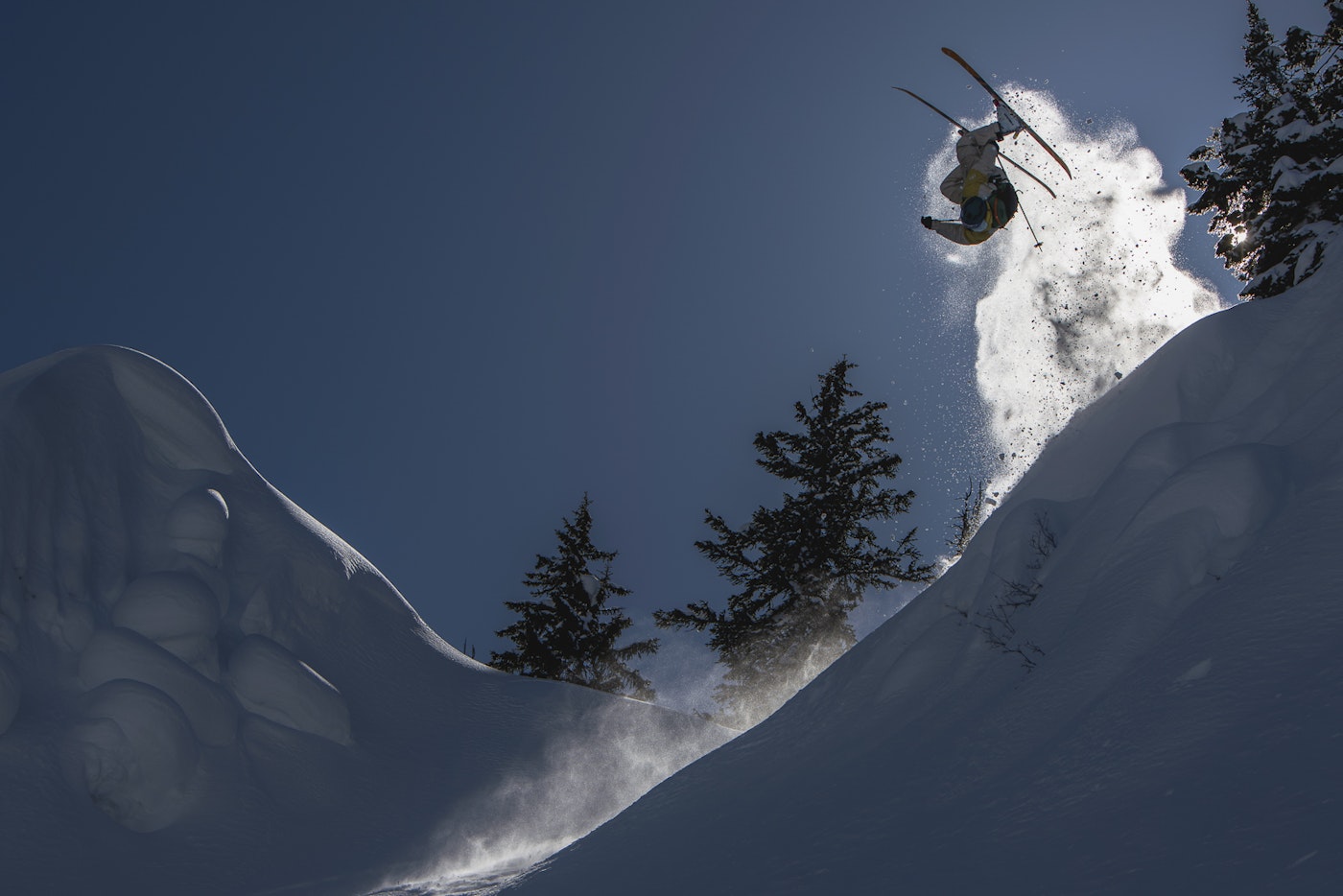
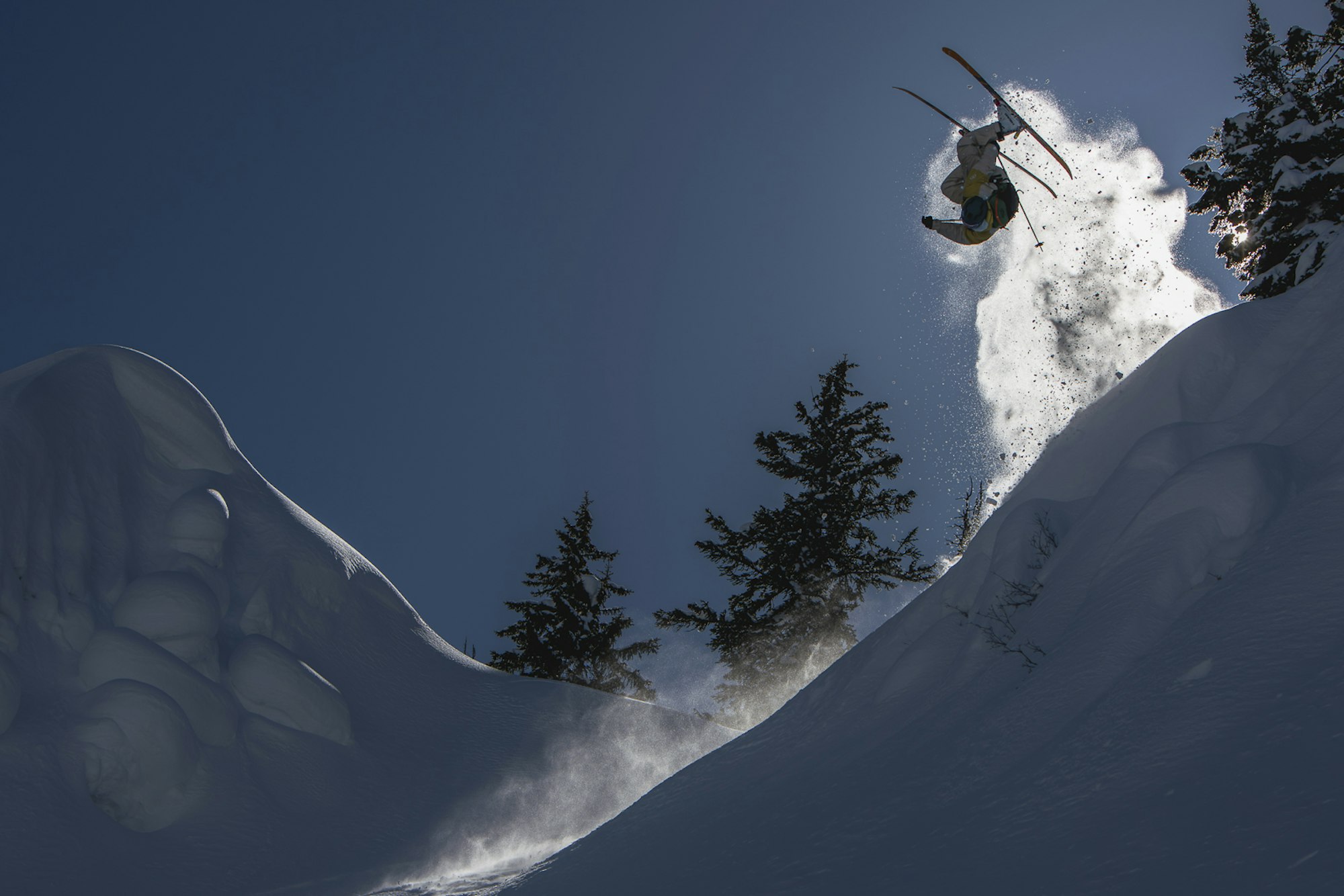
A timeless Japan grab; never out of style | PHOTO: Nic Alegre
I like to think of it as a warm-up, especially in the early season. On this mission, for example, we built some jumps, worked on tricks, and got the legs ready by skiing some pow. It comes down to doing the most you can with the conditions that you have. If you try to get more out of the mountain than what is available, it makes for a bad recipe. The choice to me is an easy one; I’m not going to f*ck around with a bad snowpack. I think having that mindset and making the most out of what you have can help give direction, and you never know, maybe you’ll get a bonus great clip out of it.
It sounds like you found some better conditions after that, though.
Big time. I went to chase storms for two weeks with Wiley Miller and crew, filming for a project he’s working on. It seemed like the whole time we had these bundles of sunny days, followed by big storms, and then more sun with cold temps. It was just a perfect mix. We had pretty stable snow at that time, which made it easier to step out into bigger terrain. The team worked well together and we were able to crush a couple of awesome zones within a few days.
While filming, do you enjoy the freedom of chasing snow, or prefer to be stationed and wait for the storms?
There are pros and cons to each method, and a lot of it can depend on who you’re filming with. Around here, I love freeballing it and heading out to wherever the snow is. There are so many options within a 10-hour drive that you can usually go find better or safer conditions. But if you’re filming with someone like TGR [Teton Gravity Research] and you’re somewhere that requires permits and a large crew, it makes sense to plan it out and be patient. The trip with Wiley [Miller] was a great example of how it can be beneficial to roam, but mid-winter I went to northeastern British Columbia with the LINE team and we posted up in one spot, which turned out to be perfect.
What made that trip so enjoyable?
So many things to be honest. It was the whole LINE backcountry team out there in the boonies; Dylan Siggers, Garrett Capel, Jonnie Merrill, Ben Richards, Liam Morgan, Wing Tai Barrymore and myself. Everything aligned and we were able to get so many shots. We filmed enough to make a 20-minute movie, which will be coming out this fall. The trip almost got called off because BC was having a pretty sub-par year in terms of snow. But we got word that their snow pack had frozen, so their instability was brought down significantly, and it snowed a good bit after. We made our way up there, and for the next five days it was sunny and there was no wind. Everything was stable and we were able to get into some super good skiing.
The team was so flexible too, and we were all there to ski without any expectations, which yielded excellent results. The great thing about this area was how accessible different terrain was. For example, I was focused on skiing some bigger lines while others wanted to build a booter. I would radio over, hike up, and ski back down while the cameras were rolling. When you’re in the mountains with so many great skiers that have different styles, it can be hard to find terrain that suits all. Liam Morgan wants to ski different lines than Jonnie Merrill, but you want to find options for both, which is exactly what happened. Overall the crew was really productive, and we’re all great buddies which helps the process.
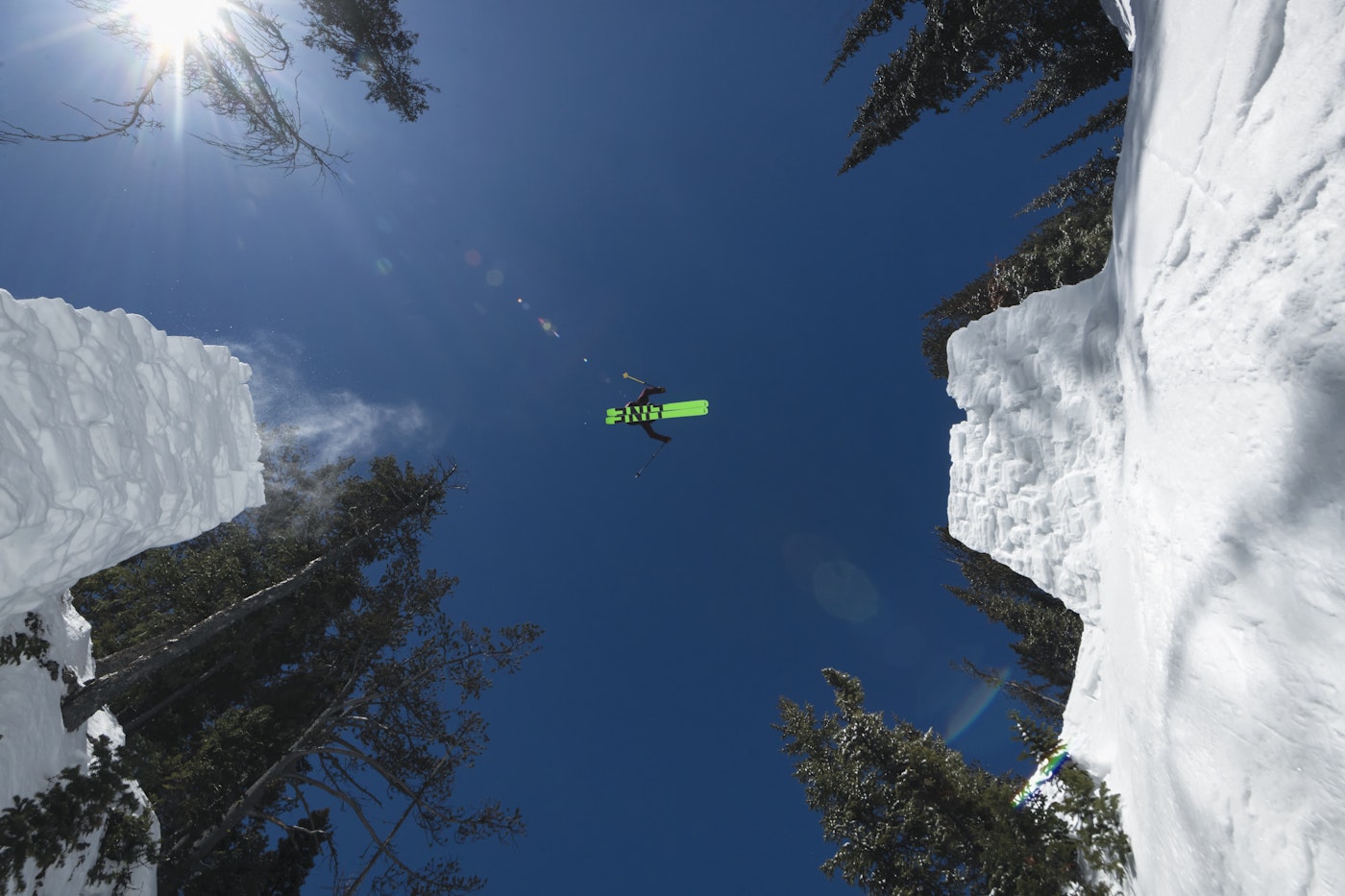
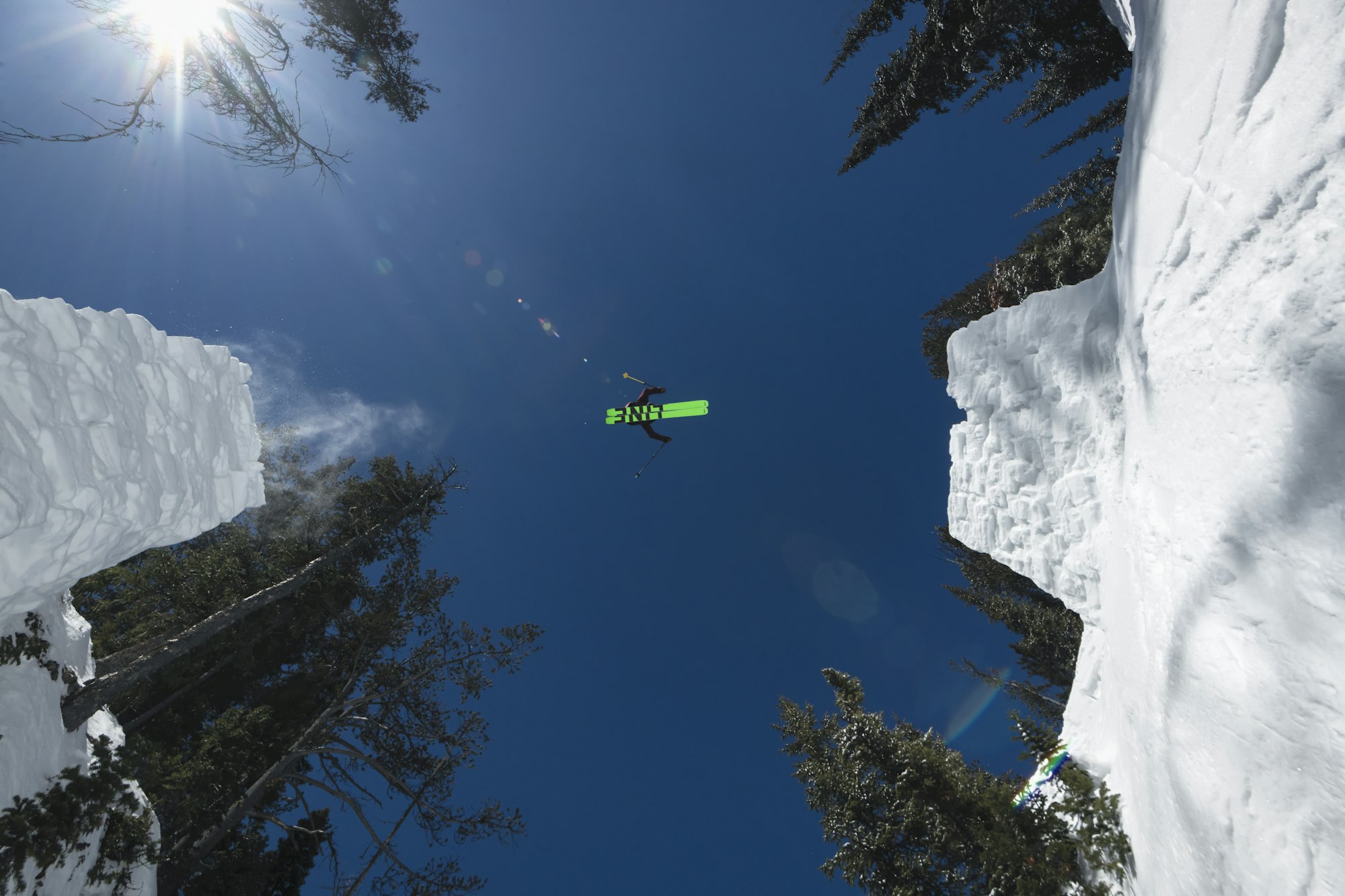
Mind The Gap! Hopfinger threads the needle on a hand-built monster | PHOTO: Nic Alegre
It’s just a great company, plain and simple. They’re so easy to work with, management is great, I get along with the other skiers that I’ve met, they have a budget to send us on trips, [laughs] I could keep going but you get the idea. I ride the Optic 114 mainly, and when I joined LINE they had a few prototypes of the ski and asked me, along with a few other skiers, to help design it before they put it to market. They listened to us and made a ski that was stiffer than almost anything they’d made in the past. That immediately showed me how much they value their athlete’s input, and I think it’s paid off and made for such a great product. I mean, it’s seriously my favorite ski in the world right now. The metal and carbon form this balance of stiffness and stability without becoming too damp. There’s still pop and life in the ski, but on larger lines, I know I can lay into it. As an ex-racer turned freeride guy, I can attest that [the Optic 114] checks all the boxes I’m looking for.
After British Columbia, did you continue the hunt for bigger lines?
Oh yeah. I got to head up to Alaska with a crew from Rab. This one had been on the calendar for a while, so I knew it was coming up. I had been following the storms closely, and AK had been having a great year so I was excited. We were based out of Anchorage, skiing the Chugach Range mostly, all touring. I had only been to Alaska to heli ski, which was an indescribable experience and showed me how massive these mountains are. Because of this, I was apprehensive about touring out there for the first time, but it turned out to be great. We skied a lot of lines that weren’t too hard to get to, and the snow was incredible.
I’m sure you get outerwear offers from many brands. What is it about Rab that stands out to you?
Rab is so good at taking feedback on gear and ingesting it. I love the fact that they’re willing to hear me out when I bring up ideas. I mean, anything from a zipper change to a whole new pant, they always greet the idea with open ears. I wouldn’t say that’s rare from a company, but it certainly is not abundant in the ski world. It says a lot about the people higher up, and the principles they put in place.
On that note, I really like what they stand for. I feel like that’s important to mention. You could say they make gear for… the expedition of sport. I just came up with that, but I think it summarizes it well. [laughs] They really only seem to be concerned about creating a great product that you can trust. It sounds corny but that’s 100% true.
Since it was your first time touring in Alaska, what was different than what you expected?
The access was honestly easier than I anticipated. There were a few passes, like Turnagain and Hatcher Pass, that brought us up above tree line. You can see the lines you want to ski right from the parking lot, which was very different from what I thought would be the case. It was eye-opening to see how relatively easy touring access is in Alaska. It’s very attainable for any experienced backcountry skier, and you don’t need to shell out heaps of money or climb in a helicopter to ski some cool lines.
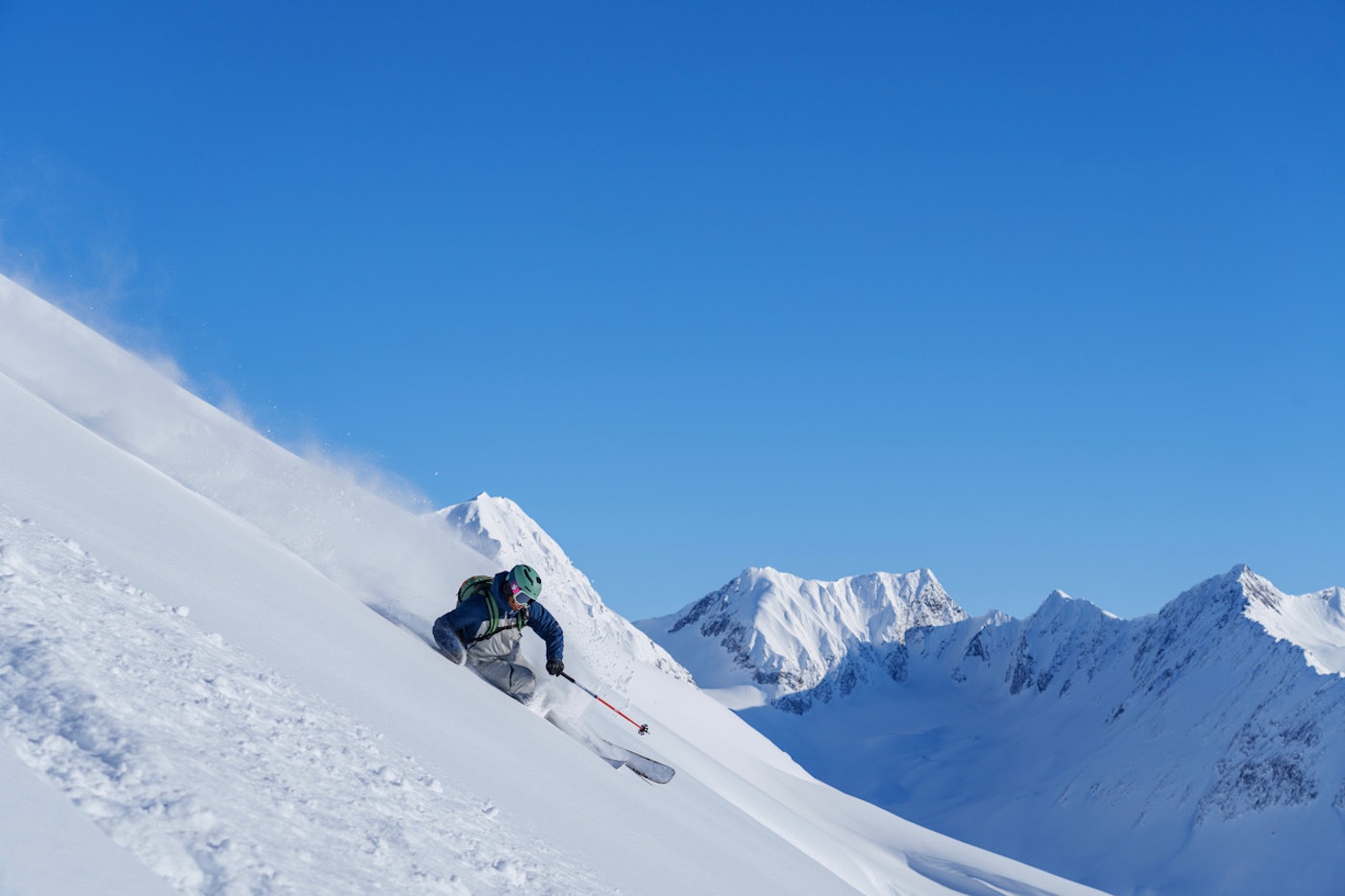
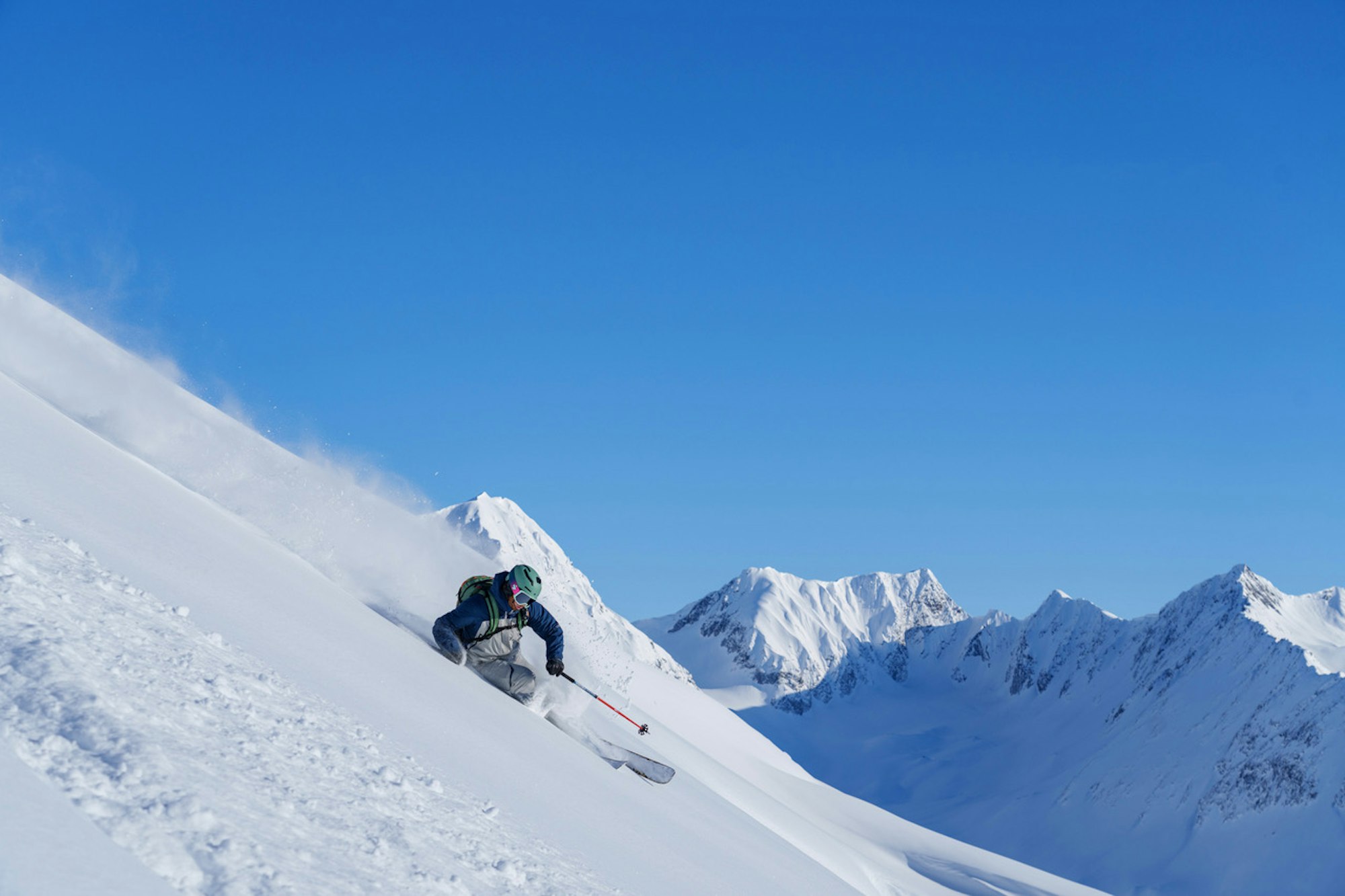
Hopfinger lays hip in the Alaskan alpine with the Rab crew | PHOTO: Fred Marmsater
I love the patience that comes with ski touring. It’s very versatile, and there are places where foot power is your only safe means of ascending, but even when other transport is an option I enjoy the slow burn, you could say. You have a lot of time to process what’s around you when touring, from the snowpack to the wind and everything in between. I love the efficiency of snowmobiles or a heli when we’re filming, but as skiing continues to become more and more fast-paced, I hope that’s an attribute of the sport that is preserved; taking your time and observing what’s around. And that’s important no matter how or where you’re skiing. After this trip wrapped, I stayed in Alaska to ski and tried to keep some of that in my mind.
I heard you managed to stay in AK for a few days and score some heli laps. How did that come together?
Well, I was supposed to fly home from Anchorage, but the snow was so good and I was checking the weather every hour. I saw that a reset storm was supposed to blow in and that it was going sunny for three full days after that, just pure high pressure. I didn’t have anything going on, so I started making frantic calls to some friends telling them to get up here, and then dialed every heli operation in Alaska to see if they had openings. Thankfully Crown Mountain Guides out of the Knik Glacier, Palmer, AK got back to me and said they could fly us. I spent all day booking tickets and, miraculously, everyone made it to Anchorage about 12 hours from the first phone call. I’m still stunned that it came together, but holy sh*t did it make for an epic trip. We flew three days in total and got to film for a personal project I’m working on. It really couldn’t have worked out any better.
What was it like being a director, producer, and skier in a single outing?
I enjoyed the whole process, from coming up with a budget to curating the team. It’s going to be a five to ten-minute piece, so nothing outrageous but a great project to get a first official taste. I’ve done a lot of producing elements in the past, so it was rewarding to get the chance to put it all together, especially under such exciting circumstances. Being in the hot seat like that is certainly intimidating, but it’s so rewarding when it all lines up.
I’ll also say that I’m lucky to have a great team of filmmakers and editors that have helped me in the past and are now helping me to make this new piece. Ski clips always need something to back them, to help bring out the feeling we’re trying to convey. That could be music, framing, post-production editing; all the aesthetics add up. The teams I’ve gotten to and continue to work with help make all that possible and make a director or producer role so much fun.
Is it a role we’ll see you continue in the future?
Absolutely. Next winter I’m trying to dial in something similar. It will be a bigger project, but I’ll be in a similar producer role. And who knows, years down the road maybe it’s something that I can continue after I step away from skiing. I guess it all depends on how well these do. I just enjoy having a lot of personal media, you could say. Clips and footage that I can use and assemble in my own vision, or with others, but have a solid input. I’ve had the chance to film with such incredible companies who put together big projects, but I’d love to have more opportunities to decide to shape the film.
Today we have more ways of sharing media than ever. Instagram, Facebook, YouTube and other mediums all cater to different styles. It certainly seems that shorter pieces are becoming the norm. As someone experienced on both sides of the camera, how do you feel about that? How do you see the mediums we use affecting the culture of freeskiing?
Social media plays such a big role in the ski industry, but I don’t necessarily think it’s the best role. To me, there are better ways to share the fruits of our labor, of what we do all winter. You could see the craziest ski clip of your life on Instagram, but then you scroll on to something else and that clip is out of your memory forever. That’s the dangerous part to me. What’s the point of doing it if nobody gains anything from it, and if it hardly gets absorbed? The real goal of these clips is to share them with the world and inspire someone else to go out there and try to capture their own magic, but when it gets lost in the digital world, how can it inspire anyone? The constant media barrage leads to so much saturation.
That’s why I’m such a believer in long-form projects. The hour-long movies are great, but even a 15-minute film can have a lasting impact. When I sit down and watch something with great music, color, editing, the whole nine, that’s a true experience, not a five-second one-and-done. It sticks with me and gives me something to walk away with. The time is well spent, instead of spending hours on social media and not retaining much. But it’s hard because sh*t gets views on social media, and I understand athletes and companies have to roll with it to make money.
There are always pros and cons to anything, and the exposure young skiers get through social media is incredible. I don’t want to discount that. But if we want freeski culture to be authentic and have real quality, we have to take time to create and enjoy longer projects. Because to me, that’s how you truly inspire younger people to keep it going and continue the circle of passion. That’s what it’s all about.

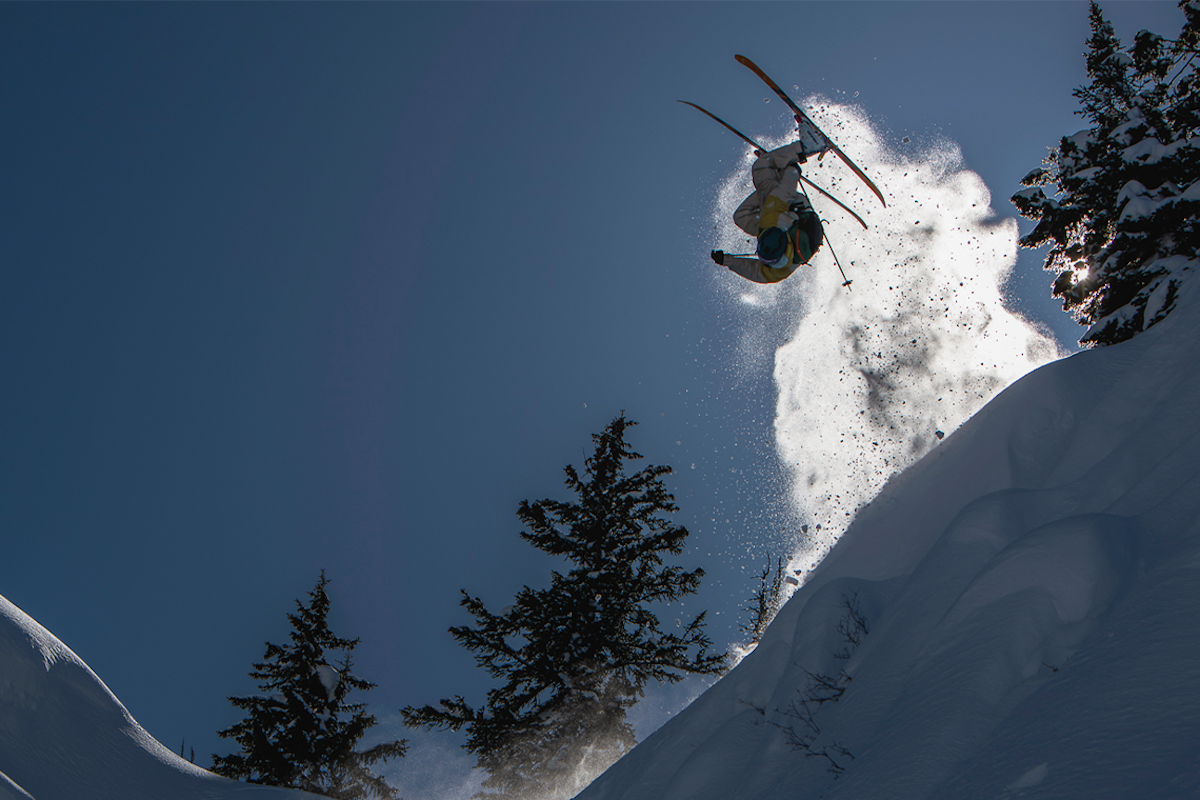
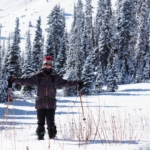

![[GIVEAWAY] Win a Head-to-Toe Ski Setup from IFSA](https://www.datocms-assets.com/163516/1765920344-ifsa.jpg?w=200&h=200&fit=crop)


![[GIVEAWAY] Win a Legendary Ski Trip with Icelantic's Road to the Rocks](https://www.datocms-assets.com/163516/1765233064-r2r26_freeskier_leaderboard1.jpg?auto=format&w=400&h=300&fit=crop&crop=faces,entropy)




![[GIVEAWAY] Win a Head-to-Toe Ski Setup from IFSA](https://www.datocms-assets.com/163516/1765920344-ifsa.jpg?auto=format&w=400&h=300&fit=crop&crop=faces,entropy)


